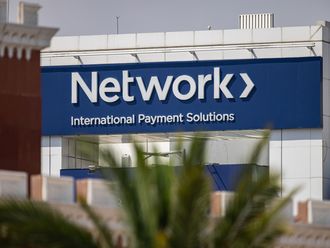Dubai: The UAE’s banking sector is expected face decline in deposits during the next 12 t0 18 months in the context of relatively lower government and public sector deposits and a fast growing remittance outflows according to analysts.
The oil price decline is expected adversely impact deposit positions of UAE banks as these constitute a significant portion of the deposit bases of the UAE banks especially the Abu Dhabi based banks. With the oil prices averaging around $60 (Dh220) a barrel for the current year, banks are expected to face depletion of government and GRE deposits.
“We are expecting noticeably weaker deposit growth in 2015 and 2016 due to a drop in government and public sector deposits. The relative weight of these deposits in total resident deposits for rated UAE banks has averaged 28 per cent to 29 per cent since 2000 on the back of strong oil revenues,” said Standard & Poor’s credit analyst Timucin Engin.
Oil prices broke below $100 a barrel in September 2014, with the benchmark Brent crude plummeting to $51.6 a barrel in the first week of February 2015. Standard & Poor’s price assumption for Brent is an average $55 a barrel in 2015, $65 a barrel in 2016, and $80 a barrel in 2017.
According to credit rating agency Moody’s, lower deposit inflows from government and its related entities may constrain loan growth or result in banks tapping more costly wholesale funding markets, either of which would reduce profitability. “That said, for most of the region’s banks, market funding is generally limited and liquidity buffers are healthy. GCC banks’ liquid assets are equivalent to around 30 per cent of total assets and loan to deposit ratios stand at 92 per cent on average, leaving some headroom for banks to adjust to changing funding conditions in an orderly fashion,” said Robard Williams, a Moody’s Vice President and Senior Credit Officer.
Much stronger deposit growth than credit growth has markedly improved the funding profiles of UAE banks from 2009 to date. The UAE banking system swung from having total net external liabilities of about $21.5 billion at end-2008, to a $9.3 billion net asset position on September 30, 2014. “We believe with this solid cushion, banks will be able to manage the tougher times ahead in 2015 and 2016,” said Engin.
Significant surge in remittances by the large expatriate work force and huge outflow of expatriate deposits because of the depreciation of some of the emerging market currencies in relation to the dollar pegged UAE dirham has also contributed to big outflow of funds from the UAE banking system last year.
“A rising dollar and relative weakness of some of the emerging market currencies have been contributing to money outflow form the banking system. Anecdotal evidence suggest, weak Indian rupee and Russian rouble have prompted to many depositors to move their money into these currencies to take advantage of favourable exchange rates and higher nominal interest rates,” said Garbis Iradian, Deputy Director of Institute of International Finance (IIF).












